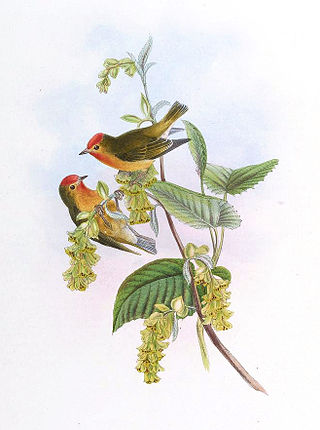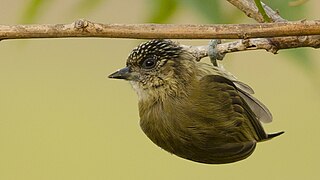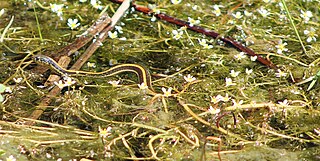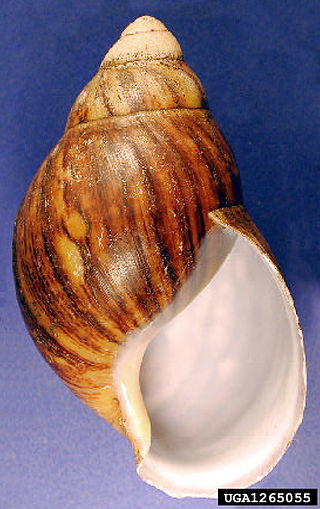In computing, on the X Window System, X11 color names are represented in a simple text file, which maps certain strings to RGB color values. It was traditionally shipped with every X11 installation, hence the name, and is usually located in <X11root>/lib/X11/rgb.txt. The web colors list is descended from it but differs for certain color names.

The chivi vireo is a small South American songbird in the family Vireonidae. It was formerly considered a subspecies of the red-eyed vireo. It is usually green to yellow-green in color with off-white underparts, and a gray crown. It has a whitish supercilium extending over its ear coverts, and its lores are dull gray in color. The chivi vireo has nine subspecies. It is found throughout most of northern, eastern and central South America, only being absent from southern Chile and southern Argentina. It inhabits multiple types of habitat across its range, and appears to adjust well to slightly disturbed habitat. The chivi vireo is mainly resident, but at least two of the subspecies inhabiting the south of its range are known to be migratory.

The golden-olive woodpecker is a species of bird in the subfamily Picinae of the woodpecker family Picidae. It is found from Mexico south and east through Panama, in every mainland South American country except Chile, Paraguay, and Uruguay, and Trinidad and Tobago.

The fire-capped tit is a small, 10 cm (3.9 in) long, weighing about 7 g (0.25 oz) bird species assigned to the family Paridae, that breeds in the temperate forest bordering the Himalayas to the south, in the Hengduan Shan and Nujiang Shan on the Myanmar-China border, the Micah Shan and Daba Shan on the Northern Sichuan border. It winters down hill and further south. Further to the east, birds tend to be smaller and the plumage becomes gradually darker.

The olive-capped flowerpecker is a species of bird in the family Dicaeidae. It is endemic to the island of Mindanao in the Philippines.Its natural habitat is tropical moist montane forest.

The golden-green woodpecker is a species of bird in subfamily Picinae of the woodpecker family Picidae. It is found in Panama and every mainland South American country except Chile and Uruguay.

The olivaceous piculet is a species of bird in subfamily Picumninae of the woodpecker family Picidae. It is found from Guatemala south through Central America and western South America to Peru.

The yellow-cheeked chipmunk, also known as the redwood chipmunk, is a species of rodent in the squirrel family, Sciuridae. It is endemic to areas near the coast of northern California in the United States where it inhabits coastal coniferous forest.

The American herring gull or Smithsonian gull is a large gull that breeds in North America, where it is treated by the American Ornithological Society as a subspecies of herring gull.

The aquatic garter snake is a species of colubrid snake. Three subspecies are currently recognized.

Indrella is a monotypic genus containing the single species Indrella ampulla, a tropical terrestrial air-breathing gastropod mollusk in the family Ariophantidae. It is endemic to the Western Ghats of India.

Seashore wildlife habitats exist from the Tropics to the Arctic and Antarctic. Seashores and beaches provide varied habitats in different parts of the world, and even within the same beach. Phytoplankton is at the bottom of some food chains, while zooplankton and other organisms eat phytoplankton. Kelp is also autotrophic and at the bottom of many food chains. Coastal areas are stressed through rapid changes, for example due to tides.

The giant West African snail or banana rasp snail is a species of air-breathing tropical land snail, a terrestrial pulmonate gastropod mollusk in the family Achatinidae. They can grow up to 20 centimetres (8 in) long, and live up to 10 years or more.

Haminoea is a genus of medium-sized sea snails or bubble snails, marine opisthobranch gastropod molluscs in the family Haminoeidae, the haminoea bubble snails, part of the clade Cephalaspidea, the headshield slugs and bubble snails.

Agaronia testacea, a species of sea snail with the common name Panama false olive, is a marine gastropod mollusk in the family Olividae, which are known collectively as "the olives".

Oliva barbadensis is a species of sea snail, a marine gastropod mollusk in the family Olividae, the olives.
Olivella riverae is a species of small sea snail, marine gastropod mollusk in the subfamily Olivellinae, in the family Olividae, the olives. Species in the genus Olivella are commonly called dwarf olives.

The ISCC–NBS System of Color Designation is a system for naming colors based on a set of 13 basic color terms and a small set of adjective modifiers. It was first established in the 1930s by a joint effort of the Inter-Society Color Council (ISCC), made up of delegates from various American trade organizations, and the National Bureau of Standards (NBS), a US government agency. As suggested in 1932 by the first chairman of the ISCC, the system's goal is to be "a means of designating colors in the United States Pharmacopoeia, in the National Formulary, and in general literature ... such designation to be sufficiently standardized as to be acceptable and usable by science, sufficiently broad to be appreciated and used by science, art, and industry, and sufficiently commonplace to be understood, at least in a general way, by the whole public." The system aims to provide a basis on which color definitions in fields from fashion and printing to botany and geology can be systematized and regularized, so that each industry need not invent its own incompatible color system.

Suillus pungens, commonly known as the pungent slippery jack or the pungent suillus, is a species of fungus in the genus Suillus. The fruit bodies of the fungus have slimy convex caps up to 14 cm (5.5 in) wide. The mushroom is characterized by the very distinct color changes that occur in the cap throughout development. Typically, the young cap is whitish, later becoming grayish-olive to reddish-brown or a mottled combination of these colors. The mushroom has a dotted stem (stipe) up to 7 cm (2.8 in) long, and 2 cm (0.8 in) thick. On the underside on the cap is the spore-bearing tissue consisting of minute vertically arranged tubes that appear as a surface of angular, yellowish pores. The presence of milky droplets on the pore surface of young individuals, especially in humid environments, is a characteristic feature of this species. S. pungens can usually be distinguished from other similar Suillus species by differences in distribution, odor and taste. The mushroom is considered edible, but not highly regarded.

















